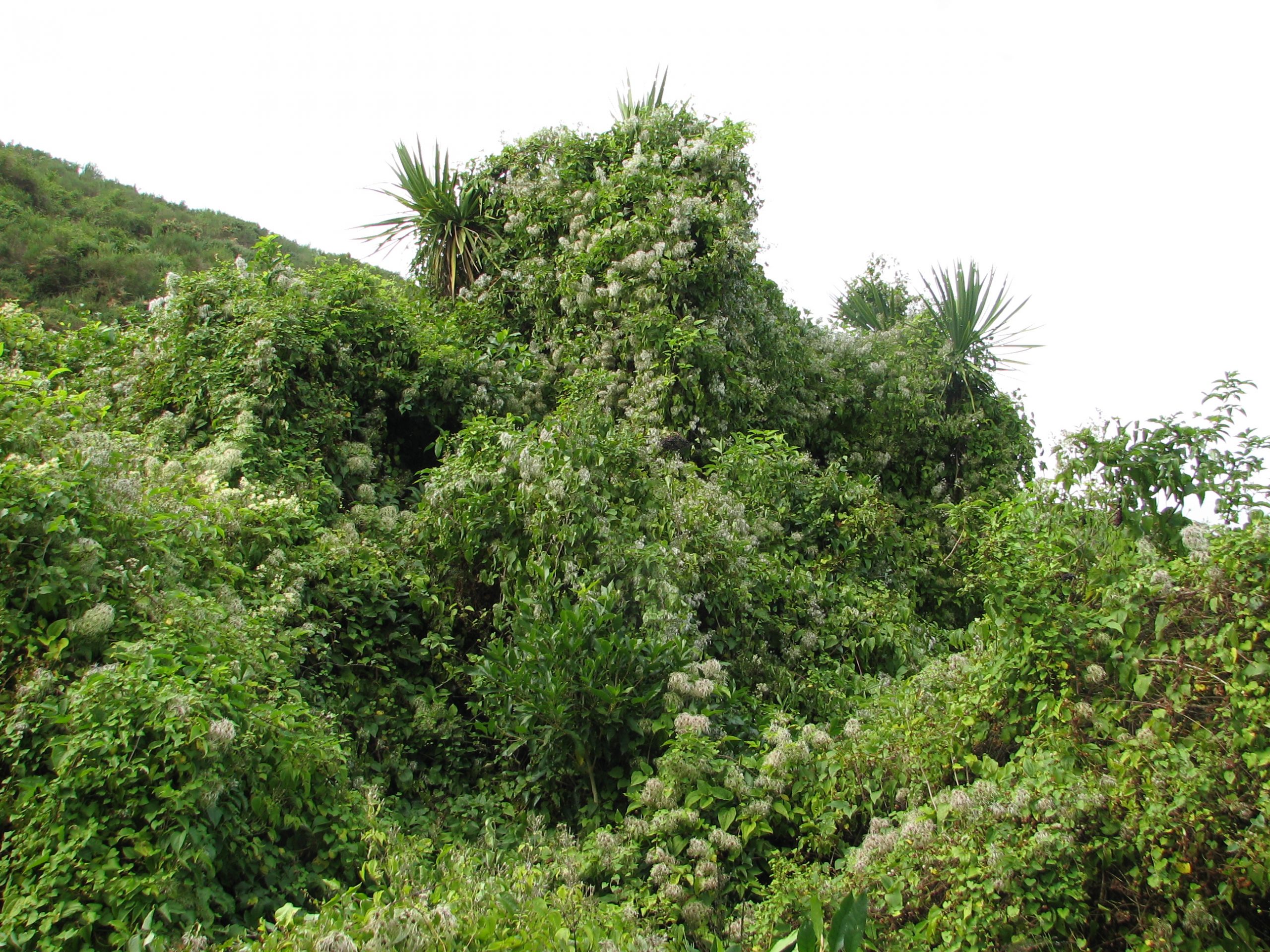
Reduce Weeds
We often think of “weeds” as those we find in our garden, but our context we think of them as invasive plants that can alter or prevent regeneration of native species.
They achieve this by different methods and can invade intact native forests and bush remnants by either smothering the trees (e.g. old man’s beard) or smothering the ground and preventing native seedlings from regenerating.
ECan has identified the “dirty dozen” (PDF download), and of those probably only 4 are more prevalent on Banks Peninsula. Note gorse and broom are not necessarily recognised as weeds when considering regeneration of native plantings, as they provide a nursery and shelter for young seedlings. Hinewai is recognised as the best example of this.
Why we’re doing this?
Pests aside, creating a great habitat for our native fauna and flora is one of the most important things we can do to help them flourish in our valley. If they don’t have a home, and more importantly a safe home, then at best they will be “flatting” in our valley, prone to being moved on, or killed by predators, at any time.
Invasive weeds smother natives and prevent our native plants from regenerating into the rich bush environment that used to exist.
What can you do?
Identify invasive weeds on your property and look to reduce and remove them over time. It is a process, but an enormously worthwhile one. The native bush may not regenerate without your help.
What we’re targeting?
Old Mans Beard
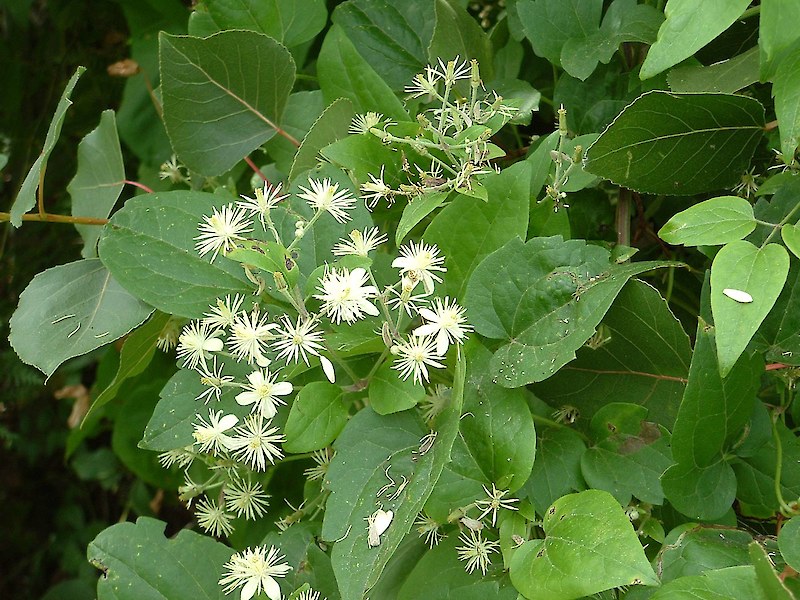
Clematis vitalba (old man’s beard) is a fast growing, deciduous climber. Seedlings have one to three leaflets and the mature plant has five leaves. The flower appears in summer and early autumn, is creamy white in colour and perfumed. The characteristic feathery seed heads give this climber its name and appear from autumn to spring. The vines have six strong
longitudinal ribs. Older stems have pale brown stringy bark with longitudinal furrows.
Similar species: Native clematis is three leaved, flowers from spring to early summer, seeds in late summer and has a smooth vine. Old man’s beard can be distinguished because it is
deciduous (loses its leaves in winter), and has 5 opposite leaflets per stem.
Why are they a problem?
It smothers and kills all plants to the highest canopy, and prevents the establishment of native plant seedlings. Moves readily into established forest over canopy and by layering
One plant is capable of blanketing an area of 180 m2. It seeds profusely and the seed can remain viable in the soil for several years. Stems can provide up to 10 m of growth in a season.
Control:
- Search — and trace all vines back to ground level
- Clear — a small area around the base of the vines
- Cut — all vines as close to the ground as possible
- Treat — freshly cut stumps with an undiluted herbicide such as:
- Glyphosate (Roundup, Network Glyphosate 360 etc.)
- Woody Weed Killer
- Vigilant
- Banvine
Find out more at Weedbusters.
Banana Passionfruit

Banana passionfruit is an evergreen climber with 3-lobed, hairy leaves and large pink flowers. The fruit are up to 12 cm long and yellow or orange when ripe.
Distribution:
Banana passionfruit is widely scattered as a garden escape. Banana passionfruit is being controlled in some places on Banks Peninsula.
Why are they a problem?
The plant smothers native vegetation and stops the light from reaching seedlings and so stops plants regenerating in forests.
Control:
- Pull roots up (all year round).
- Cut and treat stump (all year round): cut trunk near to the ground, and swab freshly cut stump with metsulfuron-methyl 600g/kg (1g/L); or Tordon BK (100ml/L); or triclopyr 600g/L (100ml/L); or Banvine (200ml/L).
- Roots normally are easy to pull out. Use herbicide only when roots cannot be pulled.
Find out more at Weedbusters.
Sycamores
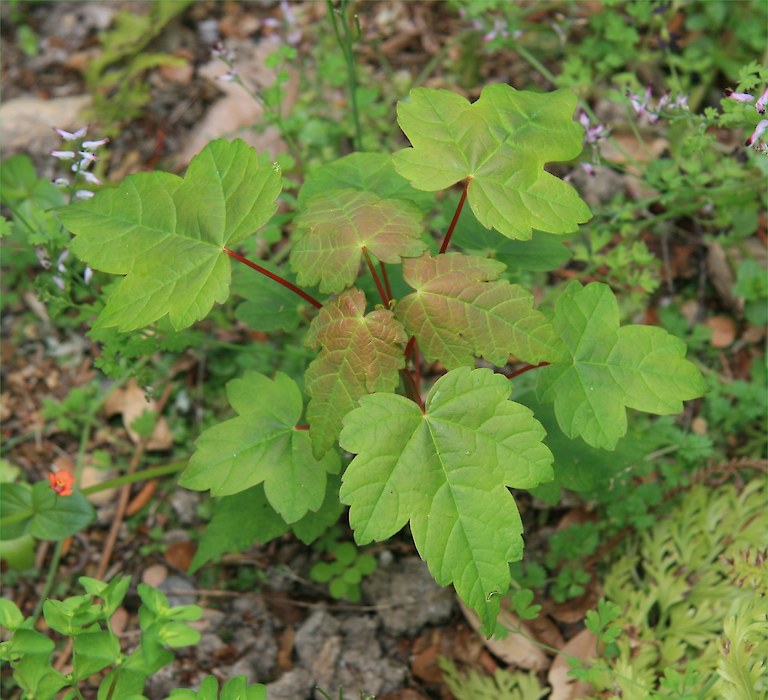
Sycamores are deciduous trees with opposite, 5-lobed leaves, small flowers in clusters and typical winged seeds.
Distribution:
Sycamores are widespread on the Peninsula.
Why are they a problem?
Sycamores potentially rival wildling pines as an invasive tree species in New Zealand as they seed prolifically, can germinate through pasture grasses and under native canopies, and can extend above native treelines in alpine areas.
Control:
Seedlings can be hand-pulled but this is merely holding the line unless the parent trees are killed. Trees can either be cut down and the stumps treated with herbicides as they will resprout, or the tree killed standing with herbicides. The latter can be best where safety is not an issue because the dead tree can provide a better habitat for site restoration.
Option 1: Cut tree down and treat the stump with herbicide
Paint the edge of the cut stump with undiluted glyphosate (e.g. Roundup), Vigilant gel or Metsulphuron-methyl (e.g. Escort) at 20g per litre.
Option 2: Bore shallow holes in the tree and fill with herbicide
Drill holes around the base of the trunk no more than 100mm apart and fill the holes with undiluted glyphosate (e.g. Roundup) or Metsulphuron-mthyl (e.g. Escort) at 20g per litre.
Find out more at Weedbusters.
Grey Willows

Also known as pussy willow, shrub willow, sallow. Grey willows are deciduous shrubs or small trees with catkins that appear often before the leaves sprout in spring. The leaves are shiny on upper side, alternate, oval and hairy on their underside. Stems are grey or greenish-grey and hairy, or reddish to dark purple and are not brittle.
Distribution:
Grey willow or pussy willows is an invasive tree in swamps and along stream and lake margins.
Why are they a problem?
Grey willows dominate favoured sites and exclude native plants. They also alter the hydrological regime in swamps and streams.
Control:
Option 1: Willows can be killed by cutting the tree down and treating the stumps with herbicide, or for large trees, by drilling holes in the truck (one hole, 2 cm deep every 10 cm of trunk) and filling the holes with glyphosphate (e.g. Roundup) until it stops draining away.
Note: Disposal of the whole plant is necessary if the cutting method is used as willows can resprout from fragments, and burning or transfer to landfills rather than composting is required for disposal.
Option 2: Spraying the whole tree when it is in full leaf with glyphosphate (e.g. Roundup) at 15ml per litre of water, plus a penetrant.
Option 3: Seedlings can be uprooted and left to dry.
Find out more at Weedbusters.
More Information:
- More information on managing plant pests can be found on the ECan website.
- ECans “War on Pests – A landowners guide for Banks Peninsula and Kaitorete Spit“
- Download DOCs war on weeds brochure
reducing Weeds
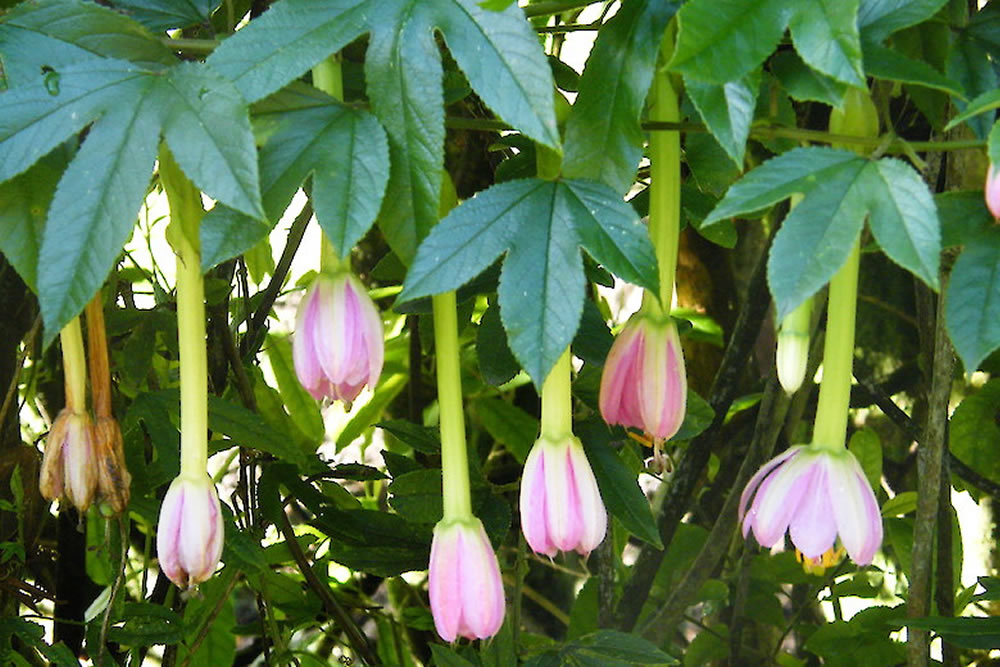
Invasive weeds smother native forest, bush or the ground and prevent native seedlings from regenerating. Removing weeds gives our native vegetation a chance to return to its natural state and provide a home for bird and insects.
removing Pests

The impact of introduced predators has had a devastating impact on many native species, with a massive decline in numbers or, sadly, extinction. Removing pests is the #1 way to help revive our native birds, insects and invertebrates.
replanting Natives
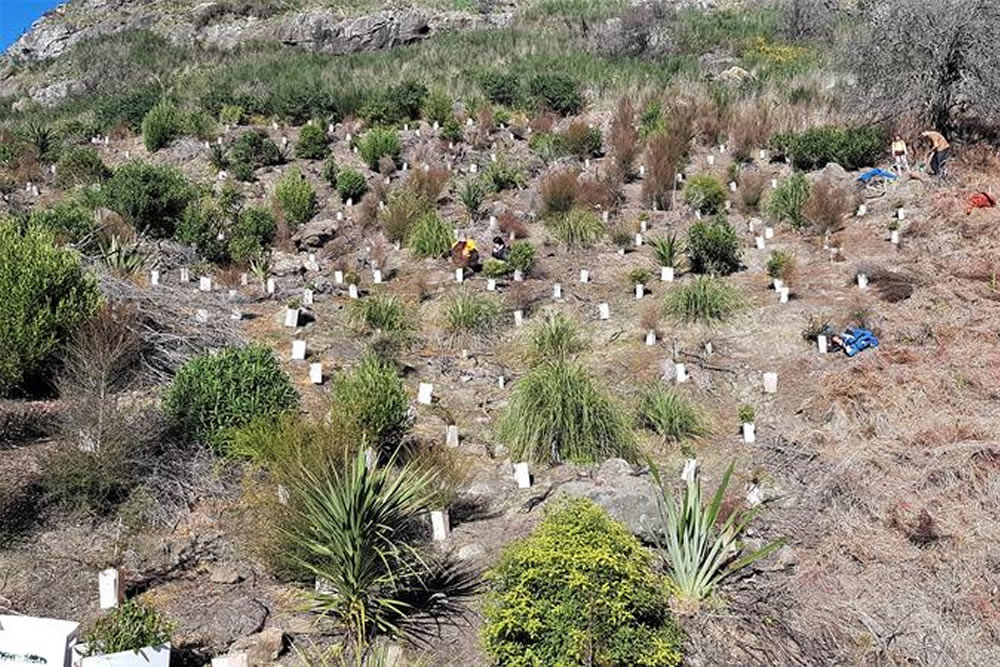
Banks Peninsula was covered in a rich and diverse forest that supported an abundant bird and animal population. Regeneration of their “home” is an important step in helping these populations return.
Let’s work together to help reWild Wainui!
Join our community initiative to reduce Weeds, remove Pests and replant Natives.